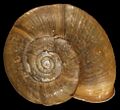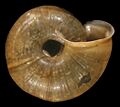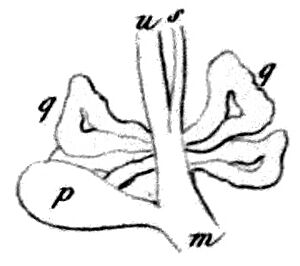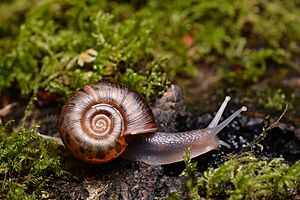Escargot de Quimper facts for kids
Quick facts for kids Escargot de Quimper |
|
|---|---|
 |
|
| Conservation status | |
| Scientific classification | |
| Kingdom: | |
| Phylum: | |
| Class: | |
| (unranked): |
clade Heterobranchia
clade Euthyneura clade Panpulmonata clade Eupulmonata clade Stylommatophora informal group Sigmurethra |
| Superfamily: |
Helicoidea
|
| Family: |
Elonidae
|
| Genus: |
Elona
H. Adams & A. Adams, 1855
|
| Species: |
E. quimperiana
|
| Binomial name | |
| Elona quimperiana (Férussac, 1821)
|
|
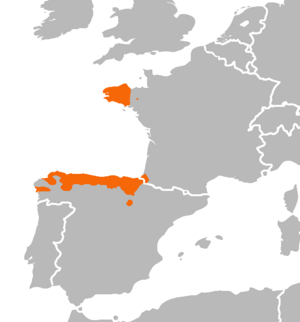 |
|
| Synonyms | |
|
Helix quimperiana Férussac, 1821 |
|
The escargot de Quimper (say "es-car-go duh Kem-pair"), also known as Elona quimperiana, is a special type of land snail. It breathes air and belongs to the mollusk family. This snail is the only species in its group, which means it's a very unique kind of snail!
Its scientific name, quimperiana, comes from the city of Quimper in Brittany, France. This snail is so important that it's protected by a special rule called the Habitats Directive.
Contents
Discovery of the Snail
Elona quimperiana was first described in 1821. A scientist named André Étienne d'Audebert de Férussac gave it the name Helix quimperiana back then.
It was found near Quimper in Brittany, France. Two people, Messieurs De Kermovan and Bonnemaison, discovered this snail.
What Its Shell Looks Like
The shell of the Quimper snail is shaped like a flat spiral. It's called "planorboid." The top part, called the spire, is a little bit curved inwards.
The edge of the shell is round and has a horn-like color. It also has a few white stripes. The shell has about five or six turns, called whorls.
The opening of the shell is shaped like a crescent moon. The edge of this opening is white and spreads out.
- The shell is usually about 20 to 30 millimeters (about 0.8 to 1.2 inches) wide.
- It is about 10 to 12 millimeters (about 0.4 to 0.5 inches) high.
Inside the Snail
The snail's jaw has between 11 and 16 thin ridges. Scientists have studied the inside of Elona quimperiana in great detail. Early descriptions were made by Alfred Moquin-Tandon in the mid-1800s.
Where It Lives
This snail is found in parts of France and Spain. It has a very unusual distribution, meaning it lives in separate areas that are far apart. You can find it in northwestern France (Brittany), northwestern Spain, and the Basque Country.
Its Home
The Quimper snail likes to live in forests. These are usually forests with trees that lose their leaves in the fall. It needs places that are warm and humid.
How It Grows and Reproduces
Like many other snails, the Quimper snail is a hermaphrodite. This means each snail has both male and female parts.
Snails become old enough to have babies when they are about two years old. They usually mate in the middle of the season. The snail lays its eggs underground in small, natural tunnels in the soil.
In Brittany, these snails have two main times of the year when they lay eggs.
- Babies hatch in the spring (April to May).
- They also hatch in the fall (September to October).
What It Eats
This snail mainly eats fungi that grow on rotten, dead tree stumps. It especially likes oak trees. Sometimes, it also eats animal waste or dead animals.
The Elona quimperiana snail does not move very far from its home. It is believed that it survived during the Ice Ages by adapting to changes in its forest home.
See Also
- Norelona pyrenaica – This is a snail species that is closely related to the Quimper snail.



